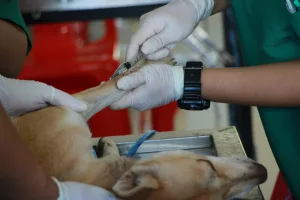Understanding hamster behavior is essential for providing the best care for these small furry creatures. One common behavior that many hamster owners observe is when their hamster climbs to the top of the cage. While it may seem like a simple action, there are various reasons why a hamster may exhibit this behavior. Hamsters are fascinating little animals, and their behavior is often a window into their world. Observing your hamster climb to the top of its cage can be both amusing and concerning, depending on the context. Let’s delve deeper into the reasons behind this behavior and explore how you can enhance your hamster’s environment to cater to its needs.
Natural Instincts
Hamsters are natural climbers in the wild, often scaling rocks and burrows to explore their surroundings and stay safe from predators. When a hamster climbs to the top of its cage, it may be satisfying its natural instinct to climb and explore. Providing a variety of climbing structures and toys in your hamster’s cage can help fulfill this instinctive behavior.
Enrichment Ideas
- Climbing Toys: Introduce ladders, ropes, and climbing walls specifically designed for hamsters. These can be easily found at pet stores or online.
- DIY Projects: Consider crafting simple climbing structures using safe materials like untreated wood or cardboard. Ensure there are no sharp edges or small pieces that could be swallowed.
- Rotation of Toys: Regularly change the climbing toys to keep your hamster engaged. This mimics the constant change in the wild environment and prevents boredom.
- Natural Elements: Incorporate natural elements such as small rocks or branches (cleaned and safe) to mimic their natural habitat.
Case Study: Rocky the Climber
Consider Rocky, a dwarf hamster who lives in a bustling household. His owners noticed that Rocky spent a lot of time scaling the walls of his cage. They decided to introduce a variety of climbing toys, including a miniature rope ladder and a small rock climbing wall. Over time, they observed that Rocky’s climbing became more purposeful and seemed to satisfy his exploratory instincts, leading to a noticeable reduction in his restless behavior.
Seeking Attention
Hamsters are social creatures and enjoy interacting with their owners. Climbing to the top of the cage may be a way for your hamster to seek attention or communicate with you. If your hamster climbs to the top of the cage when you are nearby, try interacting with it by talking to or gently petting it to see if it responds positively.
Building a Bond
- Consistent Interaction: Spend time with your hamster daily to build trust. Handle it gently and speak softly to reassure it.
- Response to Climbing: If your hamster climbs when you are present, it might be a call for interaction. Offer it a treat or some playtime outside the cage under supervision.
- Observation: Pay attention to the times of day your hamster is most active and try to interact with it during these periods.
- Positive Reinforcement: Use treats and praise to reinforce positive interactions, which can help strengthen the bond between you and your hamster.
Tips for Enhanced Interaction
- Routine Playtime: Establish a routine where you interact with your hamster at the same time each day. This predictability can be comforting and help your hamster look forward to these interactions.
- Interactive Toys: Use interactive toys that you can control, like a small ball or a treat-dispensing toy, to engage your hamster’s attention and encourage physical and mental activity.
Excess Energy
Like many small animals, hamsters have a lot of energy to burn. Climbing to the top of the cage could be a way for your hamster to release excess energy and stay active. Providing a large enough cage with ample space for your hamster to climb, run, and play can help prevent boredom and promote physical activity.
Cage Setup for Activity
- Wheel Size: Ensure your hamster has a properly sized wheel. Dwarf hamsters need a smaller wheel, while Syrian hamsters require a larger one.
- Multi-Level Cages: Consider a multi-level cage that provides more vertical space for climbing and exploration.
- Safe Exercise: Create a playpen area outside the cage for supervised exercise. This can include tunnels and mazes to stimulate its mind and body.
- Variety of Textures: Include different textures in the cage like wood, paper, and hay to keep your hamster’s senses engaged.
Practical Exercise Tips
- Regular Supervised Time Outside the Cage: Allow your hamster some free time in a secure environment outside the cage. Ensure the area is free of hazards and always supervise.
- Obstacle Courses: Create simple obstacle courses using everyday items like toilet paper rolls, small boxes, and safe wooden blocks. These can provide both physical and mental challenges for your hamster.
Stress or Anxiety
In some cases, climbing to the top of the cage could be a sign of stress or anxiety in your hamster. Changes in environment, loud noises, or lack of hiding spots can all contribute to a hamster feeling stressed. If your hamster is consistently climbing to the top of the cage and displaying other signs of stress, it’s important to assess its living conditions and make any necessary adjustments to ensure its well-being.
Reducing Stress
- Quiet Environment: Place the cage in a quiet area away from loud noises or high traffic.
- Hideouts: Provide your hamster with plenty of hiding spots within the cage. Small houses or tunnels can make them feel secure.
- Routine: Establish a regular feeding and interaction schedule to create a sense of predictability and security.
- Calming Scents: Use natural calming scents like lavender (in a non-toxic form) to create a soothing environment.
Identifying Stress Triggers
- Environmental Changes: Be mindful of any recent changes in your home that might affect your hamster, such as new pets, renovations, or frequent visitors.
- Behavioral Indicators: Look for signs such as excessive grooming, teeth chattering, and sudden changes in eating habits, as these can indicate stress or anxiety.
Health Concerns
Lastly, climbing to the top of the cage could also indicate underlying health issues in your hamster. Respiratory infections, dental problems, or arthritis can make it difficult for a hamster to move comfortably on the ground, leading it to seek higher ground. If you notice any changes in your hamster’s behavior, such as difficulty climbing or unusual lethargy, consult a veterinarian for a thorough health check-up.
Monitoring Health
- Regular Check-Ups: Schedule routine veterinary visits to catch any potential health issues early.
- Behavioral Changes: Keep a journal of your hamster’s behavior to track any changes over time that might indicate health problems.
- Diet and Nutrition: Ensure your hamster is receiving a balanced diet to support its overall health. Fresh fruits, vegetables, and high-quality hamster pellets are essential.
- Weight Monitoring: Regularly weigh your hamster to ensure it maintains a healthy weight, as fluctuations can be a sign of health issues.
Common Health Issues to Watch
- Respiratory Infections: Symptoms include wheezing, sneezing, and nasal discharge. Prompt veterinary care is essential.
- Dental Issues: Overgrown teeth can cause discomfort and eating difficulties. Provide chew toys to help keep teeth at a healthy length.
- Skin Conditions: Look for signs of excessive scratching or hair loss, which could indicate mange or allergies.
Expanding Understanding
Understanding your hamster’s climbing behavior is just one part of ensuring a happy and healthy life for your pet. By observing its actions and responding appropriately, you can strengthen your bond and provide an enriching environment that caters to its natural instincts and needs.
Case Study: The Curious Climber
Take the example of Bella, a Syrian hamster owned by a family in Ohio. Bella was frequently seen climbing to the top of her cage in the evenings. Her owners initially thought she was just energetic, but upon closer observation, they noticed she was also chewing on the cage bars. After consulting with a vet and researching hamster behavior, they realized Bella was both bored and seeking attention. They revamped her cage with new climbing toys, increased interaction time, and introduced a more varied diet. Within weeks, Bella’s climbing became less frequent, and she appeared more content.
Additional Tips for Hamster Care
- Temperature Control: Maintain a stable temperature in the room where the hamster lives, ideally between 65-75°F (18-24°C), to prevent stress from temperature fluctuations.
- Socialization: While hamsters are generally solitary, gentle and regular handling can help them become more comfortable with human interaction.
- Observation: Regularly observe your hamster for any signs of distress or unusual behavior. Quick action can prevent minor issues from becoming major health concerns.
- Clean Habitat: Ensure the cage is cleaned regularly to prevent the buildup of waste and bacteria, which can lead to health issues.
Nutritional Advice
- Diverse Diet: In addition to hamster pellets, offer small amounts of fresh produce like carrots, apples, and leafy greens. Avoid citrus fruits and sugary treats.
- Hydration: Ensure fresh water is always available. Check the water bottle daily to prevent blockages.
Seasonal Considerations
- Winter Care: Ensure the cage is away from drafts and maintain a warm environment. Some hamsters may become less active in colder months.
- Summer Care: Keep the cage out of direct sunlight and ensure good ventilation to prevent overheating.
By providing a stimulating environment, ensuring proper social interaction, and maintaining vigilant health care, you contribute to the well-being and happiness of your furry friend. Whether your hamster climbs for fun, exercise, or out of curiosity, being an attentive and informed owner will always be the best approach.



